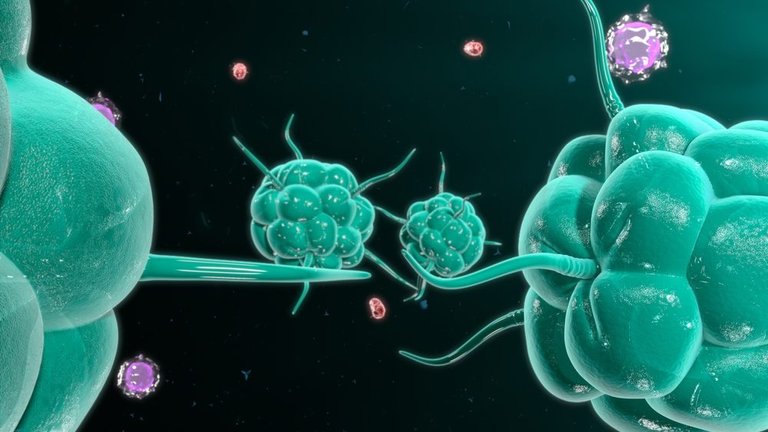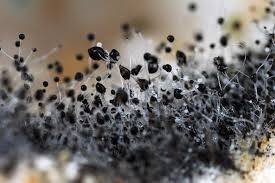
Pathogens are microscopic organisms that cause or have the potential to cause the disease. Protozoan Giardia causes diarrhea called giardiasis. Giardia species are found as free swimming trophozoites and egg-shaped cysts. This is the cystic stage that facilitates the survival of organisms under harsh environmental conditions. Different pathogen species include bacteria, viruses, protist amoeba, plasmodium and so on. fungus, parasitic wolf flat wolf and round wolf and prions. It is important to know that not all microbes are pathogenic, while these pathogens cause a variety of minor life-threatening diseases.

In fact, the human body contains thousands of species of bacteria, fungi and protozoa that are part of the normal flora. These microbes are useful and important for proper functioning of biological activities such as digestion and immune system function. Only areas that are typically germ-free in the body can cause problems when colonizing or compromising the immune system. In contrast, truly pathogenic organisms have one goal: to survive and multiply at all costs. The pathogens are specifically adapted to infect, replicate and replicate immune responses to the host and transmit to another person and to escape from the host.
What Is Bacterial Conjunctivitis?
How do pathogens spread?
Pathogens can be transmitted directly or indirectly. Direct transmission involves the spread of pathogens through direct body-to-body contact. It can occur from mother to child, as exemplified by HIV, Zika and syphilis. This type of direct transmission is also known as vertical transmission. Other types of direct contact with which the pathogens can spread include kissing herpes simplex virus, touch MRSA, and sexual contact human papilloma virus or HPV.
Pathogens can also be spread through indirect transmission. This includes contact with a surface or substance contaminated with pathogens, as well as contact and transmission from an animal or an insect vector. There are indirect transmission types, some of which are:
• Airborne:The airborne pathogen is excreted, typically sneezing, coughing, laughing, and so on. the air also remains suspended and is inhaled or contacted by another person's respiratory membranes.
• Droplets: Droplets of body fluid such as saliva, blood, etc. pathogens in contact with another person or contaminate a surface. Saliva droplets are mostly spread by sneezing or coughing.
• Foodborne contamination: Occurs with inappropriate cleaning habits after eating contaminated food or after using contaminated food.
• Waterborne: The pathogen spreads when consumed or in contact with contaminated water.
• Zootonic:The pathogen spreads from animals to humans. This includes insect vectors which feed or feed animals with diseases and transmit them to humans from wild animals or pets.
Although there is no way to completely prevent pathogen transmission, the best way to minimize the possibility of obtaining a pathogenic disease is to provide good hygiene. This includes washing the hands correctly after using the toilet, processing raw food, taking care of pets and maintaining hygiene after contact with surfaces exposed to microbes.
Pathogen Species
Pathogens are diverse and consist of both prokaryotic and eukaryotic organisms. The most common pathogens are bacteria and viruses. While both can cause infectious diseases, bacteria and viruses are very different. Bacteria are prokaryotic cells that produce disease by producing toxins. Viruses are nucleic acid DNA or RNA fragments encapsulated in a protein shell or capsid. They take over the cell machines of their hosts to make multiple copies of the virus and cause the disease. This activity destroys the host cell in the process. Eukaryotic pathogens include fungi, protozoan protists and parasitic worms.
Prion proteins have the same amino acid sequences as other normal proteins, but endure in an abnormal shape. This modified form renders prion proteins infectious because it affects other normal proteins to spontaneously infect them. Prions typically affect the central nervous system. They tend to aggregate in the brain tissue, leading to neuron and brain disruption. Prions cause Creutzfeldt Jakob disease (CJD) in humans and also lethal neurodegenerative disorder. It also causes spongiform encephalopathy (BSE) in cattle or mad cow disease in cattle.
Pathogen bacteria

Bacteria are responsible for a series of sudden and intense infections from asymptomatic. Diseases caused by pathogenic bacteria are usually the result of toxin production. Endotoxins are components of the bacterial cell wall that are released upon bacterial death and degradation. These toxins cause symptoms such as fever, blood pressure changes, tremor, septic shock, organ damage and death.
Exotoxins are produced by bacteria and released into their environment. It contains three types of ecotoxin species, cytotoxin, neurotoxin and enterotoxin.
• Cytotoxins damage or destroy some body cells. Streptococcus pyogenes (Streptococci) produce cytotoxins called erythrotoxins, which damage the capillaries, destroy blood cells and cause symptoms related to meat-eating diseases.
• Neurotoxins are toxic substances that affect the nervous system and brain. Clostridium botulinum bacteria secrete a neurotoxin that causes muscle paralysis.
• Enterotoxins affect intestinal cells, causing severe vomiting and diarrhea. Enterotoxin producing bacteria include Bacillus, Clostridium, Escherichia, Staphylococcus (Staphylococcus) and Vibriyo.
Pathogenic bacteria:
• Clostridium botulinum: Botulism poisoning, difficulty breathing, stroke
• Pneumococcus (Streptococcus pneumoniae): Pneumonia, sinus infections, meningitis
• Mycobacterium (Mycobacterium tuberculosis): Tuberculosis
• Escherichia coli O157: H7:Hemorrhagic colitis bloody diarrhea
• Staphylococcus aureus (including MRSA): Skin inflammation, blood infection, meningitis
• Vibrio cholerae: Cholera
viruses
Viruses are unique pathogens in that they are DNA or RNA segments encapsulated in a protein envelope (capsid) even though they are not cells. It infects cells and causes illness and orders cell machines to quickly produce more viruses. It prevents immune system detection and proliferates strongly in their hosts. Viruses affect not only animal and plant cells, but also bacteria and backs.
In humans, viral infections range from fatal (Ebola) to severe (mild-cold virus). They often target and infect specific tissues or organs in the body, such as the influenza virus. Rabies virus commonly infects central nervous system tissue and various hepatitis viruses in the liver. In addition, some viruses have been associated with the development of certain types of cancer. The person has been linked to papilloma viruses cervical cancer, hepatitis B and C liver cancer, and Epstein-Barr virus Burkitt lymphoma.
Pathogenic Viruses

• Ebola virus: Ebola virus disease, hemorrhagic fever
• Human immunodeficiency virus (HIV): Pneumonia, sinus infections, meningitis
• Influenza virus: Influenza, viral pneumonia
• Norovirus: Viral gastroenteritis stomach flu
• Varicella-zoster virus (VZV): Varicella-zoster virus (VZV): Chickenpox
• Zika virus: Zika virus disease, microcephaly in infants
Mushrooms

Fungi are eukaryotic organisms that contain yeast and mold. Diseases caused by fungi are also rare, and typically include a physical barrier such as skin, mucus membrane lining, and the like. or a violation of a dangerous immune system. Pathogenic fungi often switch from one form of growth to another, causing disease. In other words, unicellular yeasts show reversible improvement from yeast-like molds to mold-like proliferation, while the molds pass from mold-like material to yeast-like growth. Yeast Candida albicans changes morphology by shifting from round budding cell growth to mold-like long cell growth based on a number of factors. These factors include changes in body temperature, PH and the presence of certain hormones. In addition, C. albicans causes vaginal yeast infections. A similar type, Histoplasma capsulatum fungus, is present as a filamentous mold in its natural soil habitat, but when it is inhaled it passes into budding yeast-like growth. The acceleration to this change is the increasing temperature compared to the soil temperature in the lungs. H. capsulatum causes a kind of lung infection called histoplasmosis that can cause lung disease.
Pathogenic Fungi
• Aspergillus spp .: bronchial asthma, Aspergillus pneumonia • Candida albicans: oral thrush, vaginal yeast infection • Epidermophyton spp .: athletes foot, athletes itch, ringworm • Histoplasma capsulatum: Histoplasmosis pneumonia, cavitary pulmonary disease • Trichophyton spp .: Volume, hair and nail diseasesSingle Cell Animals
Protozoa are small single-celled organisms in the Protista Kingdom. This kingdom is very diverse and includes organisms such as algae, eaglena, amoeba, slime mold, trypanos and sporozoa. The majority of the protists who cause the disease are protozoans. They do this by feeding parasitically and multiplying at the expense of the host. Parasitic protozoa are usually contaminated with contaminated soil, food or waterways. They can also be passed by domestic and wild animals and insect vectors. Amoeba Naegleria fowler is a free-living protozoan found in soil and freshwater habitats. It is called brain-eating amoeba because it causes the disease called primary amoebic meningoencephalitis (PAM). This rare infection occurs when individuals swim in polluted water. Amoeba migrates from nose to brain and damages brain tissue.Pathogenic Protozoa
• Giardia lamblia: Giardiasis diarrhea disease • Entamoeba histolytica: Amoeba dysentery, amoeba liver abscess • Plasmodium spp .: Malaria • Trypanosoma brucei: African sleeping disease • Trichomonas vaginalis: Rrichomoniasis sexually transmitted infection • Toxoplasma gondii: Toxoplasmosis, bipolar, eye diseaseParasitic Worms

Parasitic worms infect many different organisms, including plants, insects and animals. Parasitic worms, also called helminths, include nematodes, roundworms and Platyhelminthes flat worms. Whip worms, tooth worms, needle worms, hook worms and trichina worms are parasitic roundworms. Parasitic flatworms include worms and parasites. In humans, most of these worms infect the intestines and sometimes spread to other parts of the body. Intestinal parasites adhere to the walls of the digestive tract and nourish the host. They produce thousands of eggs that come into or out of the body. Parasitic worms are spread through contact with dirty food and water. They can also pass from animals and insects to humans. Also not all parasitic worms affect the digestive tract. Unlike other Schistosoma flatworm species that infect the intestines and cause intestinal schistosomes, Schistosoma haematobium species infect urogenital tissue and the bladder. Schistosoma worms are called bloodworms because they live in blood vessels. After females lay their eggs, some eggs come out of the body with urine or feces. Others may remain in the organs of the body (liver, spleen, lungs) causing blood loss, colon blockage, enlarged spleen, or excessive accumulation of fluid in the abdomen. Schistosoma species are transmitted by contact with contaminated water with Schistosoma larvae. These maggots penetrate the skin and enter the body.
Pathogenic Worms
• Ascaris lumbricoides (intestinal worm): Ascariasis asthma-like symptoms, gastrointestinal complications • Echinococcus spp .: Tapeworm cystic echinococcosis cyst, alveolar echinococcosis lung disease • schistosomiasis mansoni: Fluke schistosomiasis bloody stool or urine, gastrointestinal complications, organ damage • Strongyloides stercoralis ( nematode): Strongyloidiasis skin rash, gastrointestinal complications, parasitic pneumonia • Taenia solium (pork tapeworm) Taenia gastrointestinal complications, sistiserkozis • Trichinella spiralis (parasitic worms): Trichinella worm trichinose edema, meningitis, encephalitis, myocarditis, pneumoniaReferences:
ncbi.nlm.nih.gov
bode-science-center.com
Posted from my blog with SteemPress : https://www.orak11.com/index.php/what-is-pathogen/
Hi! I am a robot. I just upvoted you! I found similar content that readers might be interested in:
https://www.thoughtco.com/types-of-pathogens-4135656